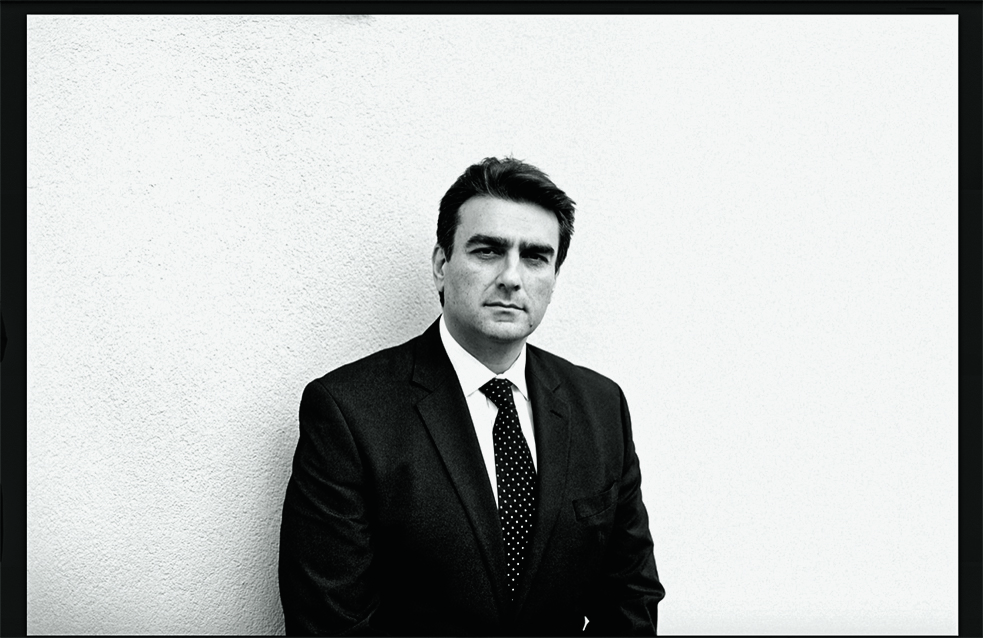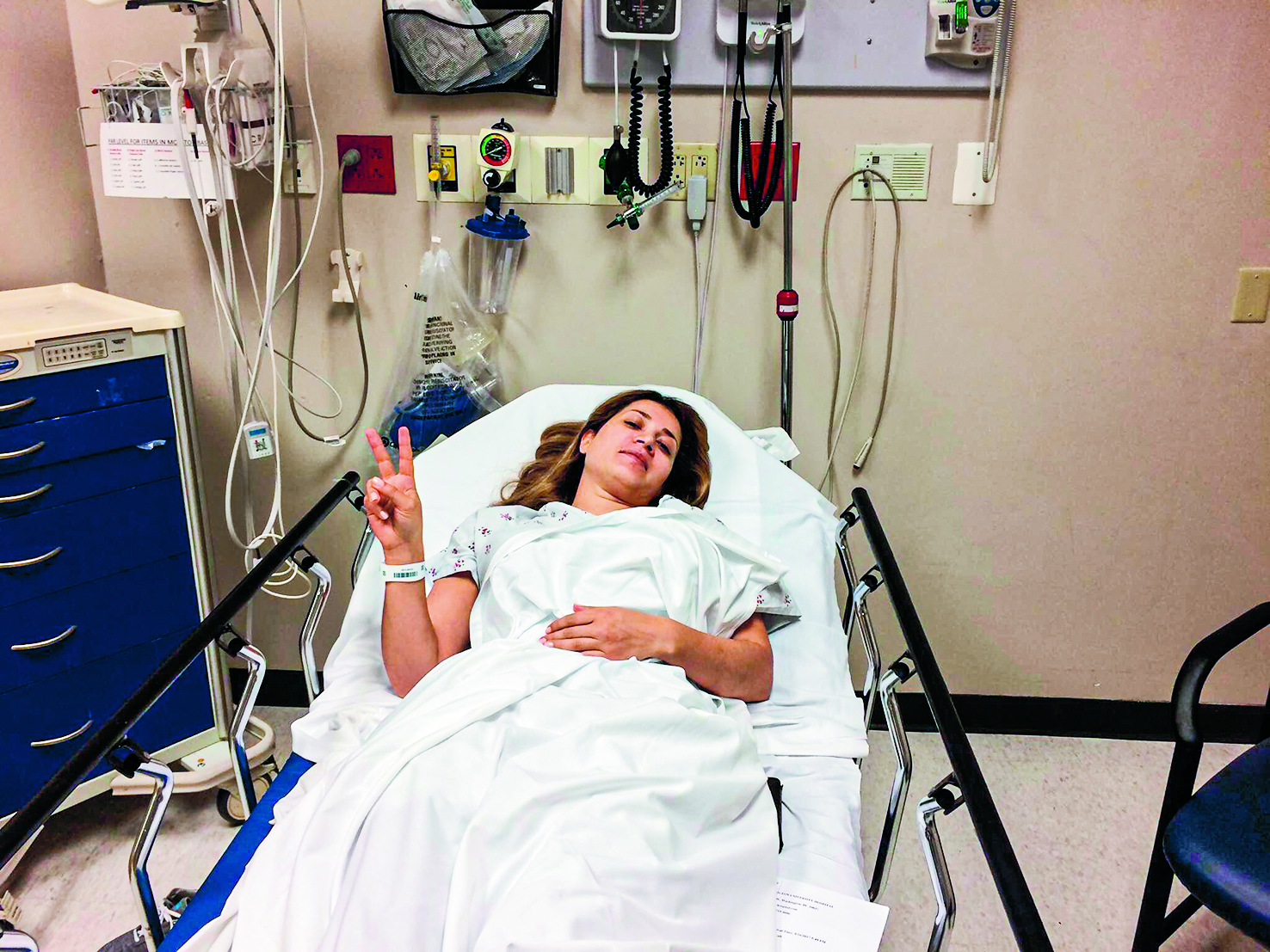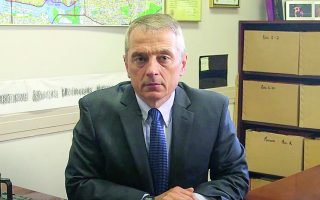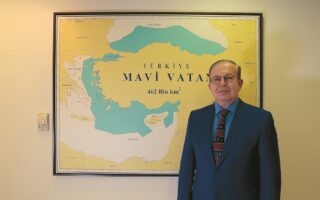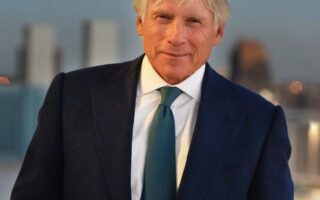Turkey in the dock over US attack on protesters
Kathimerini talks to the Greek-American lawyer leading the case concerning the 2017 brutal beatings of demonstrators in Washington
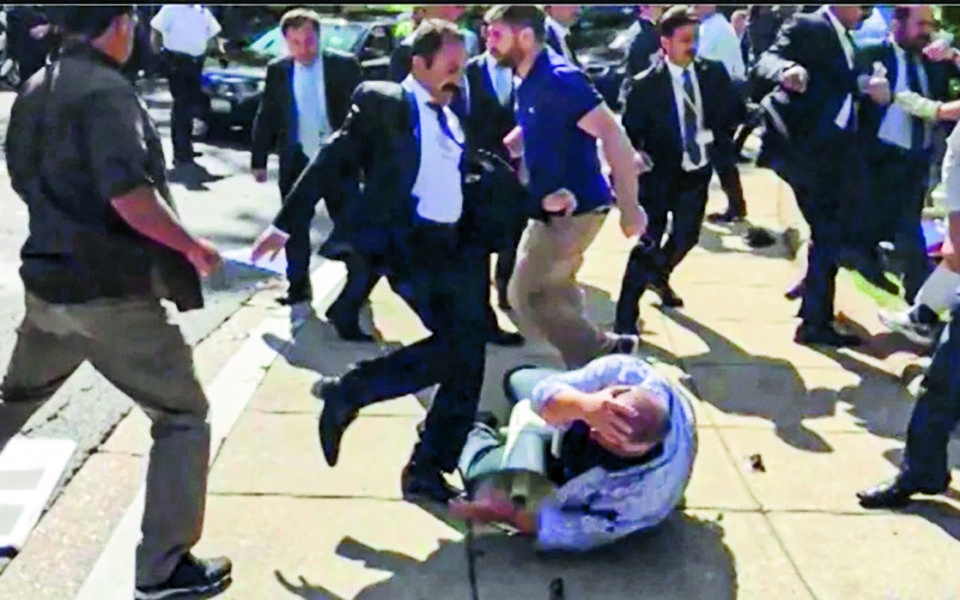
On the last day of October, lawyer Andreas Akaras kept refreshing the United States Supreme Court website trying to confirm the information he had been hearing since that morning: that the ruling he had been waiting for had been published. Indeed, the long-awaited ruling had been published online that afternoon. “They rejected Turkey’s appeal. We are on,” he enthusiastically announced to his clients a few minutes later. It was an important day. Another obstacle, perhaps the biggest, had been surpassed and the way was clear for the Turkish state to be led to court over the incident that had taken place in Washington DC on May 16, 2017.
“All five of my clients felt relief and joy. So did I,” Akaras tells Kathimerini in flawless Greek. He was born in the United States, but his father was from occupied northern Cyprus, his mother from Halki and he grew up with Greece in his heart. He agreed to talk to Kathimerini over the latest developments, the next steps, and on how this case has deeply impacted him.
He remembers it like it was yesterday, watching the news in shock as the bodyguards of Turkish President Recep Tayyip Erdogan attacked Kurdish demonstrators. Before the news story had even concluded, he called the head of his law firm. The latter had also been watching everything unfold. “Incomprehensible stuff,” he commented. “I would like to explore the possibility of moving legally,” Akaras told him. “You can do it,” he heard in response. Before joining the law firm, he had spent years as an adviser to Senator Paul Sarbanes on issues of foreign policy and had acquired a wide network and good relations with several DC groups, among them the Kurdish and Armenian communities.
On the very next day he began examining what a case like this would mean. At the same time, he discovered there was a history of such incidents by the Turkish side (in Ecuador, an Erdogan bodyguard had broken the nose of a young politician, and a similar attack had taken place in the Brookings Institution with the victims that time being exiled journalists). He also studied the case law and contacted a leading lawyer that had in the past won difficult cases against Iran for several private clients. “After we spoke and he agreed that we could work together, I knew I had the recipe to move on,” he explains.
When he felt ready, he met with one of the victims. He met with then-34-year-old Lucy Osoyan, who on the day of the protest had been viciously attacked. Of Armenian heritage, she acquired United States citizenship in 2015 and was the head of an NGO for Kurdish refugees. They spoke for a long time and Akaras explained to her it was highly unlikely that the United States government would go ahead and file charges – not due to the diplomatic immunity that Turkey claimed, but mainly due to the relations between the two countries. However, he was convinced that there was another way: “You could file a lawsuit against Turkey,” he told her. Osoyan listened carefully for a long time. At the end of their meeting, without a second thought, she told Akaras that she wanted to try.
“We knew that it was not going to be simple, but we were truly willing to fight for it. Not just to win damages for our clients, but to sound a loud message: that in Turkey such behavior may now be acceptable, but here in America we have a democracy. Citizens have every right to express themselves freely without fearing for their lives,” he explains. Over the next weeks, a very capable team of lawyers was assembled and began collecting all the evidence. In the lawsuit they filed, there is a detailed description, play by play, of everything that happened.
The incident
Akaras discovered there was a history of such incidents by the Turkish side: In Ecuador, an Erdogan bodyguard had broken the nose of a young politician, and a similar attack had taken place in the Brookings Institution with the victims that time being exiled journalists
On that day in May, Lucy Osoyan had arrived early in the afternoon outside the White House. Along with others, they had been permitted by the police to protest President Erdogan, who was there to meet with then-president Donald Trump for the first time. “Erdogan is a terrorist,” shouted Osoyan, accusing him of persecuting Turkey’s Kurds and the war in Azerbaijan in which her cousin had been killed. After the protest, she had been planning to meet with friends for lunch but heard that the others would continue their demonstration outside the residence of the Turkish ambassador. “We can walk there in 10 minutes,” they said. She canceled her lunch plans and followed them.
Outside the residence, there were approximately 15 protesters. Among them were mothers with young children as well elderly protesters; they were holding a banner accusing Erdogan and using a loudspeaker to chant slogans. Osoyan was standing on the grass when she suddenly saw a group of Erdogan supporters running toward them. Some protesters reacted loudly, and order broke down. The police officers that were there immediately intervened to separate the two sides. The Turkish ambassador appeared and asked the commanding police officer to immediately remove the protesters. “But they have a right to be here,” he replied. “Our president will be here at any moment. Do it or we will,” a member of the security detail replied. In the meantime, Erdogan’s limo arrived and pulled up just 90 meters away from the crowd. The car door swung open, and the head of the security detail moved in to talk to him. Immediately after, the security detail head appeared to say something to his second, who began to run. The lawyers analyzed the audio evidence and claim that what was said was a clear and direct order by Erdogan: “He says attack.”
At the same time, a group of black-clad men ran toward the small square and attacked the protesters. Among them, some with civilian clothing and military boots. Lucy still remembers the seconds before she lost consciousness. The fear she felt when a man forcefully shoved her to the ground, swore at her, and hit her on the head. The attack lasted for no more than five minutes. As it took place and the police were trying in vain to stop the vicious beatings, the camera recorded President Erdogan exiting his car, looking indifferently toward the square, and entering the ambassador’s residence.
Erdogan’s bodyguards
In the days that followed the attack, the police managed to identify approximately 19 men as responsible from security cameras, as well as video evidence taken by journalists and onlookers. They were both bodyguards but also Turkish citizens, fanatic supporters of the president. “In my 28 years in the police force, I have never experienced anything like it,” stated the head of the police in a press conference. He announced that there was an outstanding warrant for all of the attackers and they would be arrested if they ever returned to America. In fact, only two men were arrested as they were permanent United States residents. They were sent to prison (where they spent a year) and at some point, were visited by the Turkish foreign minister, who conveyed Erdogan’s gratitude. In Turkey, they are considered heroes. After all, Erdogan has openly mocked the lawsuits in his speeches: “If they do not have the right to protect me, what is the point of having bodyguards?” he would say.
Even if there is no evidence, Akaras is certain that behind the scenes Erdogan was strongly pushing for all the files to be archived: “And he managed it. Most arrest warrants were archived with no explanation, always at a politically ‘suspicious’ moment. Last time it happened a day before the visit of then-secretary of state Rex Tillerson to Ankara,” he notes.
In the meantime, Akaras had filed a lawsuit on behalf of the protesters as early as February 2018, but there was a significant, fundamental problem. They had tried three times to serve the summons to Ankara, but the Turkish side refused to accept it. “The fourth time, we found a system through the US ambassador in Ankara, and they no longer had the opportunity to reject it,” he explains. Two first instance rulings on the jurisdiction of US courts followed, which the Turkish side kept appealing, without submitting anything new or substantial. They refused to participate in any proceedings, until they final appeal to the Supreme Court, asking for the lawsuit to be dismissed. At the same time, they publicly warned that a potential refusal by the Supreme Court would mean the deterioration of relations between the states and similar treatment of American diplomats in Turkey.
Last Monday, just a week after the decision of the Supreme Court against Turkey, the defendants’ lawyers quit. “They insist on not recognizing the proceedings. Of course, this means that they will be judged in absentia in court that is set to go ahead,” notes Akaras (the next session will be on December 7).
In the trial, Akaras plans to not only present the events of that day and how they affected the health of the victims – both physically and mentally – but how they were later targeted and presented as terrorists. Two of the five clients filed the lawsuit under a pseudonym, out of fear not only for themselves but for their relatives in Turkey. Akaras himself was targeted by Turkish media, but that does not bother him. “I focus on the fact that I have many Turkish friends who in confidence tell me, ‘Go ahead.’ That gives me courage because there are still people in that country that know what is right from wrong. What is just.”
He estimates that the ruling will be announced within the next year and the damages that the victims will be granted. Of course, he foresees that by then Turkey will appear and will attempt to escape the sentence. For him, as a lawyer, the case is already a great success irrespective of the result. “It is an invaluable experience that we managed to confront a country like Turkey. And we did so not with fighter jets or weapons, but with laws and justice.”
In closing, we discussed if his Greek and Cypriot heritage played a part in how important this case is to him. “I do not believe that I was biased due to my heritage. But maybe, because of it, I can go into more depth than other lawyers on the team. In no way was I motivated to get some sort of revenge. I am doing it for moral reasons though – a sense of justice. And I believe my parents would be proud of me,” he concludes.
